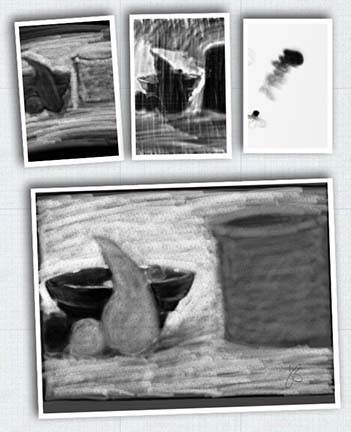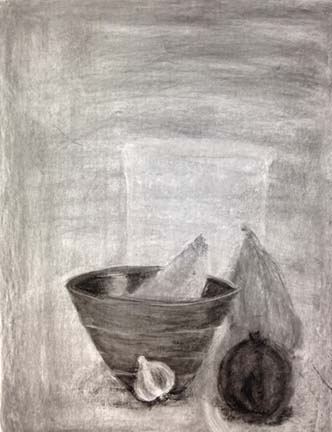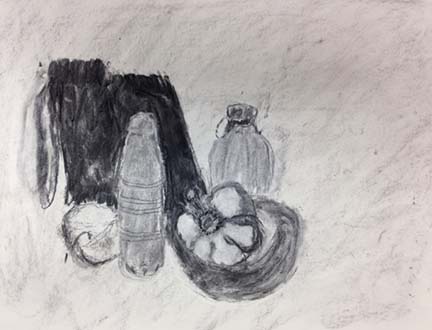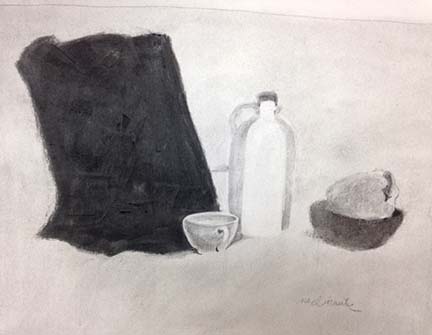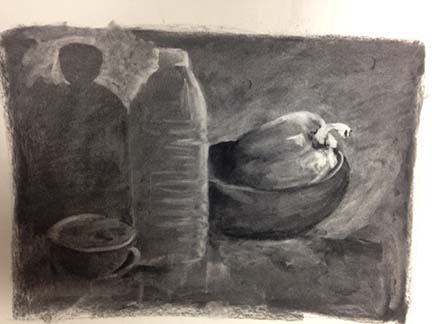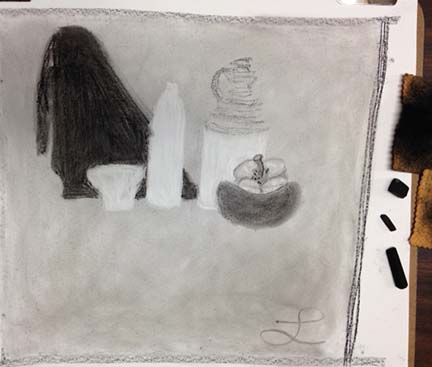" The dot, extended into a graphic curve, cannot come to rest on the last page of the sketchbook. It urges us on to further explorations, both in space and spirit."
" Drawing chimes with the needs of the moment, allowing us to dream an endless dream. "
-- Sibyl Moholy-Nagy & Emma Dexter
A LESSON IN -- Value shapes
In class we discuss simplification -- by developing the ability to eliminate trivia, we can concentrate a viewer's attention.
Our model this week--a still life arranged using a variety of objects with various local tones.
We are learning to see the inherent shape of things-- and in doing so continue to limit the use of outline. We start by picking out the "shape" in the still life that appears most clearly defined and drawing it on our paper. Getting this shape "right" gives us a standard of comparison and we can more easily judge all the other shapes and tones in the subject as they relate to the first. It is good practice to "look" for the easiest place to begin a drawing-- a place that appears to draw the eye because it is clear and obvious or less complex.
Student's began roughing in a drawing of the shapes and locations of each object using their basic tonal character. First they translate what they see into flat areas of tone, merely stating the object's shape and particular lightness or darkness. This exercise continues to challenge students especially when looking at a colorful object such as a bright yellow basket and translating its appropriate value.
Next they selected a place to turn the viewers attention-- by modifying the local tones, modeling the form in that particular area of their drawing.
ARTIST'S WHO THRILL
Sangram Majumdar & Edwin Dickinson
